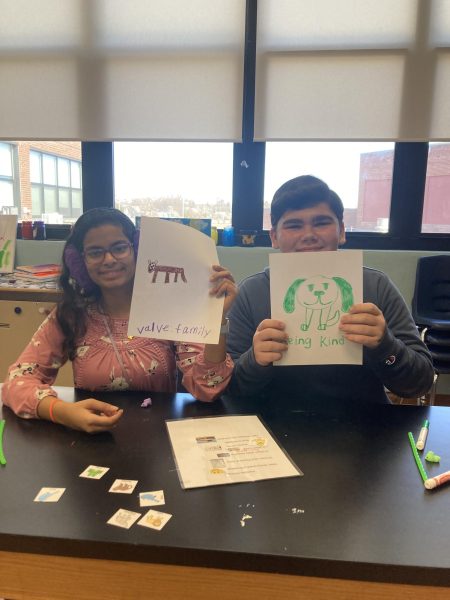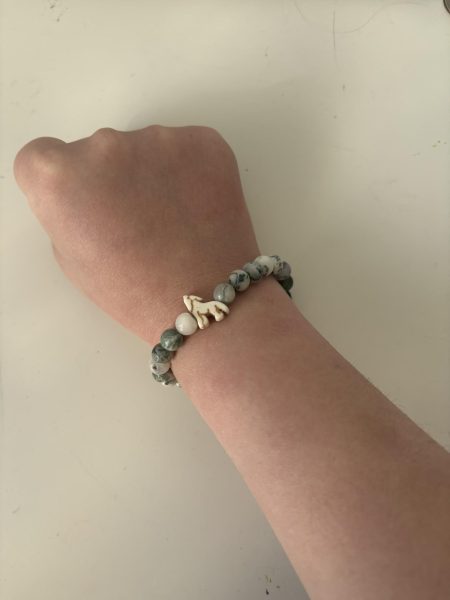Rouge River Research
Every year, the Plymouth-Canton Educational Park’s Ecology classes partner up with the Friends of the Rouge Organization to do research for the Rouge Education Project. The Rouge Education Project is a collaborative project where students from all grade levels and schools within the Rouge River Watershed survey a section of the Rouge River. “This project is a good indicator of what life in this field will be like; very realistic project,” said Drake Mecham, Canton Senior. The schools that participate generally have a portion of the Rouge right on their campus.
The Rouge River Watershed is Three Counties large, has over 25% of undeveloped land, and had over 437 square miles attached to its name. Our section of the Watershed used to be very toxic. We are such an urbanized area and we have lots of pavement in the Plymouth- Canton area and most of the soil in Canton is hard clay which makes our river very flashy. That means our rivers water level changes drastically after heavy rain because of all the pavement runoff and the inability of the water to soak the ground.
The pavement and runoff water plays a big part in the water pollution and temperature change. The hot blacktop heats up the water and when that water runs back into a reservoir it changes the temperature of the water and makes it more difficult for micro-invertebrates to live in the stream. The chemicals that we spray on our lawns as fertilizer can also get into the river when this runoff occurs.
On May 2, the P-CEP Ecology classes spent the day in waders and under microscopes as they surveyed the different components of the water’s quality. There were 10 tests performed by students throughout the day. There was a micro-invertebrates identification survey which included students in waders walking through Willow Creek, which is the creek that bisects our campus. The students assigned to this test were catching bugs that are supposed to live in the river’s waters, Plymouth Senior Brayden Grant said “If given the chance to do it again, I would. I think it is important to work on the biodiversity of our creek.” Based on the amount of each bug they found, they were able to give our stream a stream quality score. Willow Creek was given a 21. This puts us in the “Fair” category. This would be the same category we were in last year so no change there.
The next test performed was the dissolved oxygen test. This test is used to see how much oxygen is in the water. This text is extremely important because it shows how many plants are putting oxygen into the water and how many plants are using the oxygen. This year P-CEP’s creek got a 140% saturation level which multiplied by its q value and its weighting factor gave us a water quality index of 13.1. This is much better than last year when the WQI was an 11.3.
The fecal coliform test came next. This test took much longer than all of the others because they had to use an oven to heat up the cultures then wait two days to see the results. This year the ecology students counted 154 colonies per 100 ml which multiplied by its q-value and weighting factor gives Willow Creek a 6.4 WQI which is lower than last year when there were 200 Colonies per 100ml, and the lower the colonies per 100 ml the better.
The pH was tested next. Most students have tested the pH of different liquids in science class before so there may be a general idea of how this test was performed but students went out and collected a water sample and then used a chemical called a pH indicator to match the two colors. This year’s pH was an 8.5. The WQI for this test was a 7.2. The pH only changed by .5 which still leaves it in the state of Michigan standards for safe water. Last year’s pH was an 8.
Biochemical oxygen demand, or BOD, was the next test. This test is used to see how much oxygen the stream actually needs to continue functioning the way it is and if it is meeting that need. The test result was a 10, which gave us a WQI of 3.5. This is higher than last year’s data results which were a 3.1. This means our stream can support more sensitive micro-invertebrates. The Temperature test results gave us -2 degrees Celsius, which is colder than last year with 0 Degrees Celsius, but this is because Canton experienced a heavy rain the day before decreasing the temperature.
The 7th test performed that day was the Total Phosphates test; the more phosphate in the water, the better because phosphate helps inhibit growth. Last year the test results were 0.15 which is already high enough to have nice vegetation. This year the results was .1, this is lower than last year but still not low enough to inhibit eutrophic growth.
The 8th test performed was the Nitrates test. Nitrogen is needed in our creek because it provides plant nutrients which are very important to the plants growth. Since nitrogen is so abundant in fresh water it rarely stops plants from growing like it would if the phosphorus was lacking. The nitrate levels last year were 3.9 mg/l which is similar to the 1 part per million the ecology classes found this year.
The Classes also tested the turbidity of the water. Turbidity is the measure of water clarity; the murkier or cloudy the water is, the higher its turbidity. Clear water would have a very low turbidity. High turbidity is bad for streams because it can cause the water to warm and less sunlight will be allowed into the water for photosynthesis to occur with the aquatic plants. This year the turbidity levels were 10 JTU (Jackson Turbidity Units), which is on the lower side of the spectrum with chlorinated water having a turbidity of 5 JTU. Willow Creek’s turbidity Q-Value was a 79 last year. This year the Turbidity level lowered to a 77. This is good for the creek because there is more sunlight reaching the aquatic plants in the creek and the water is cooler providing a better habitat for the insects living there.
The last test they performed was a Total Solids test. The purpose of this test was to see how many particles and suspended materials were in the water, and much like turbidity, the lower the milligrams per liter, the better. This year’s Total Solids amount was 173 mg/L, this is incredibly better than last year’s amount of 559 mg/L.
The overall water quality index for Willow Creek this year was a 70.1. This puts us in the upper middle level for water quality. Last year our OWQ was a 71. This means our water quality went down. We can all do our part to help protect the Rouge River Watershed. Robert deBear, Plymouth science teacher, said “As a school district we can really improve. We need to establish a riparian zone.” Some practical ways you can help save the Rouge are conserving water, not dumping chemicals down the storm drains in the street and keeping the riparian zone (the space between the streams edge and the urbanized land, extra vegetation) clean and large.
Your donation will support the student journalists of Salem High School - MI. Your contribution will allow us to purchase equipment and cover our annual website hosting costs.






